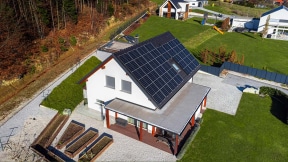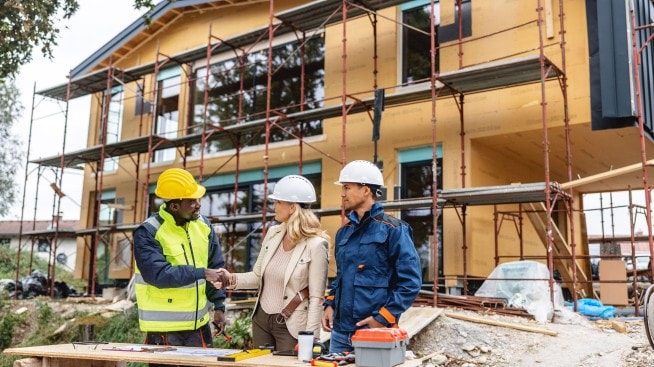What is an Energy Efficient Mortgage

An Energy Efficient Mortgage (EEM), also known as a green mortgage, allows lenders to offer borrowers a way to finance cost-effective, energy-efficient improvements to an existing property at the time of purchase or refinancing, or for upgrades above the established residential building code for new construction homes. This includes buying a home that already has eco-friendly features in place, buying a home you plan on installing eco-friendly features in, or making eco-friendly updates on a house you already own. If you’re looking to do the latter, you’ll need to refinance to take out an Energy Efficient Mortgage.
Purpose of Energy Efficient Mortgages
Energy Efficient Mortgages were created to help families save money on their monthly utility bills by financing cost-effective energy improvements into their mortgage payments. Cost-effective energy improvements are when the cost to make energy-efficient improvements to the home is less than or equal to the amount of money saved through reduced utilities and monthly expenses. In the long run, a more energy-efficient home makes homeownership more affordable for homeowners by lowering overall operating costs.
How an Energy Efficient Mortgage works?
The first step is for the borrower to work with a qualified energy rater, assessor, or auditor who creates an energy packet detailing what energy improvement opportunities are available for the home the borrower is purchasing or refinancing. Your lender can assist in helping you find a qualified individual in your area.
The energy packet is completed after the qualified energy rater has inspected the home being purchased or refinanced and includes the costs associated with materials, labor, inspections, their fee for the inspection, and details the cost-effectiveness of making certain energy-efficient improvements.
After the packet is completed, the borrower and Lender work together to determine what improvements are eligible and can be financed into the mortgage loan. There are certain limitations to the dollar amount and type of improvements that are permitted to be financed.
Common energy efficient updates
Usually, the accepted energy-efficient updates include:
- Solar heating and cooling systems
- Wind technology
- Clock thermostats
- Caulking and weather-stripping
- New or additional ceiling, attic, wall and floor insulation
- Storm windows and/or doors, including thermal windows and/or doors
Types of Energy Efficient Mortgages (EEM)
An EEM can be a government mortgage backed by the Federal Housing Administration (FHA) or the U.S. Department of Veterans Affairs (VA).
FHA EEM
FHA-approved lenders can offer FHA EEM mortgages for both purchase and no cash-out refinance transactions with a fixed rate or as an adjustable-rate mortgage (ARM) term.
The amount eligible to be financed in your base loan amount is the lesser dollar amount between the assessment completed by the qualified energy rater or 5% of the home’s value (as determined by FHA requirements). Energy-efficient improvements must be completed within 90 days of you closing on the mortgage with the lender.
VA EEM
VA loans are mortgages backed by the department of Veteran Affairs. An VA approved Lender offers EEMs that may be used in conjunction with:
- VA loans for the purchase of an existing dwelling, or
- VA refinancing loans secured by the dwelling.
The VA EEM program caps the amount that can be spent on energy improvements. If the energy improvements are below a certain dollar amount, then the lender may not require an official energy assessment.
The mortgage may be increased by:
- Up to $3,000 based solely on the documented costs,
- Up to $6,000 provided the increase in monthly mortgage payment does not exceed the likely reduction in monthly utility costs. The VA does not permit EEMs for more than $6,000.
In summary
Energy Efficient Mortgages are offered by FHA and VA approved Lenders through the FHA and VA loan programs to help make homeownership more affordable over the long term through savings on utility expenses. EEMs may be used to purchase an energy-efficient home and make approved energy-efficient improvements, or to refinance a home and make approved energy-efficient improvements that lower home operating costs. If interested, speak to your home lending advisor about potential EEM loan options for you.



